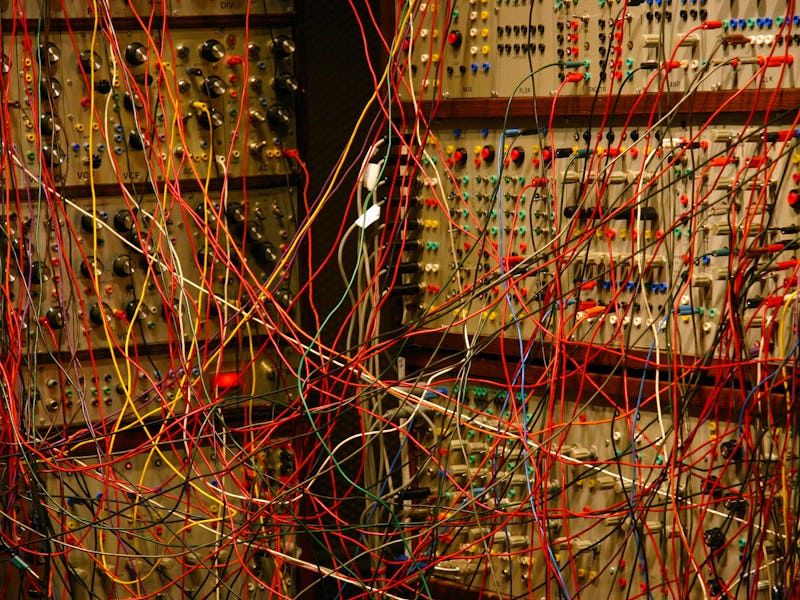'I Dream of Wires': A Story of Synthesizers and the Nerds Who Love Them
Check out this engaging and humorous doc, now streaming on Netflix.

Documentary fans, gearheads, and fans of electronic music from avant-garde to EDM should take an hour-and-a-half out and watch the indie doc “I Dream of Wires,” now streaming on Netflix. The film, directed by Robert Fantinatto, traces the development of the analog synthesizer from its Manhattan-Project-era days as a component of early, room-sized computers, to the present day. The film supplements a narrative voiceover and plenty of weird-machine eye candy with charming interviews with musicians (from Gary Numan to Trent Reznor to Meat Beat Manifesto) and tech obsessives who fell in love with these models, as well as the scientists, inventors and businessmen who brought them into the world.
The first half of the film — its most interesting section — documents the race to build the first functional synths, and the bizarre East Coast/West Coast rivalry between revolutionary designers Don Buchla and Bob Moog — the man whose name is, to many, synonymous with “synth.” Buchla’s modular synthesizer — developed in San Francisco — was developed in collaboration with academics and avant-garde composers looking to create a totally new mode of making music. The film conjures humorous images of hippie students and faculty getting stoned and basking into these space-age sine wave-heavy soundscapes (one synth was rumored to have a part that the inventors had dipped in acid for good luck).
Moog, on the other hand, was more of a businessman, aiming to make products that were more user-friendly for working musicians. Moog tied his synths to actual traditional keyboards, where Buchla refused to. As a result, Moog was the inventor to find commercial success, first by selling his early models to rich psychedelic-minded rockers. His Moog was used to produce the kitsch classic Switched-On Bach, still one of the best-selling classical music records ever made.
I Dream of Wires is most effective when it is following the shifts in fads and musical genres and examining how synth technology affected, and was affected, by these changes. We see how the addition of a sequencer (a kind of predecessor to the sampler) to Moog synths facilitated developments in new genres like krautrock and industrial music. The advent of punk meant a huge dip in synth sales, since they were deemed decadent and inauthentic. New wave music saw a turn to digital machines and early analog synths being sold for scrap. Acid house and other ‘90s genres saw a resurgence of interest in the early grimy, bass-heavy sounds only towering, unwieldy patchcord synths could convincingly produce. Seeing music history told through this very practical lens is unexpectedly compelling.
Just as enjoyable as this overarching narrative is the commentators’ deep and unaffected love for these instruments. Several ‘70s and ‘80s musicians and composers in the film recall yearning to obtain huge Moog instruments in their childhood when they were the price of one year’s salary for their parents, only to be able to pick them up for a couple of hundred dollars when they were later deemed outmoded. These machines are postulated as being conduits for sounds experimental musicians had dreamed of making before they existed — love at first sight for creative minds yearning to escape the strictures of traditional music practices. Later, when early models seemed doomed for extinction, there were diehard aficionados there to catch their fall: either to produce new models or repurpose them. This passion — both hilarious and endearing — becomes more pervasive as the film continues, making this documentary something more than the clinical technological study it initially seems to be: a story of devotion and obsession.